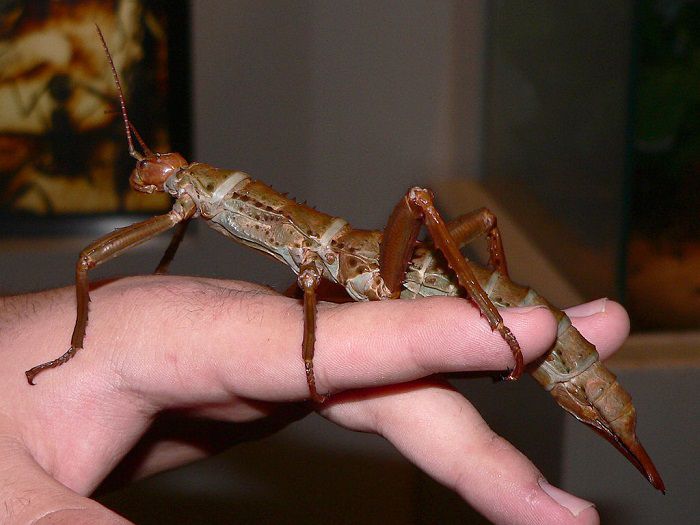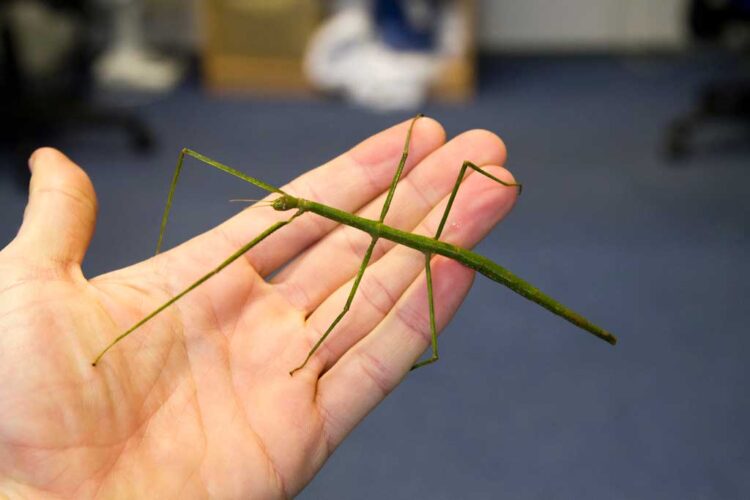Table of Contents
When most people think of pets, cute and cuddly animals such as dogs, cats, and rabbits usually spring to mind. They might even think about fish, hamsters, or gerbils. Nevertheless, very few people consider insects as pets. When it comes to first pets for children though, certain insects can be the perfect choice.
For example, you may be pondering the question are stick insects good pets.
Yes, stick insects can make for very good pets, particularly if you are looking for something low maintenance. Indeed, stick insects are quiet, clean, and easy to care for, making them the perfect pet. They are also fascinating to watch.
Such a pet can teach kids the value of life and a level of responsibility without placing too much pressure on them or yourself. As well as this, because of these insects’ relatively short lifespans, children get to see how these creatures progress from egg to nymph to adulthood in a short space of time. It is for this reason that stick insects are often chosen as a class pet in schools.
For more advice and information on keeping and looking after stick insects, check out my ebook on Amazon click here
(opens in a new tab).

What are Stick Insects Like?
If you are looking for a pet that requires very little investment and very little maintenance, stick insects are ideal. All they really need is a safe and warm environment and access to fresh leaves, and they will be content.
Most people have an idea of what stick insects are like but very few realise that there are actually over 3,000 different species of stick insect across the world. Moreover, they can vary quite dramatically in appearance as well. The most common stick insect is the Indian, or laboratory as it is sometimes known, stick insect . This stick insect species eventually grows to around eight centimetres and resembles a twig. It is typically a brown or green colour and can expertly camouflage itself in trees and bushes.
. This stick insect species eventually grows to around eight centimetres and resembles a twig. It is typically a brown or green colour and can expertly camouflage itself in trees and bushes.
The Indian stick insect is nocturnal for the most part, but it does move about during the day from time to time. Like many other species of stick insect, the female Indian stick insect can lay eggs
for the most part, but it does move about during the day from time to time. Like many other species of stick insect, the female Indian stick insect can lay eggs without mating with a male. These are known as parthenogenic insects and have the ability to lay eggs
without mating with a male. These are known as parthenogenic insects and have the ability to lay eggs that will eventually hatch into female nymphs. These nymphs are clones of their mothers.
that will eventually hatch into female nymphs. These nymphs are clones of their mothers.
How to Care for Stick Insects
If you have been wondering are stick insects good pets, then you know by now from reading thus far that the answer is a resounding yes. However, it is important to create the perfect environment for them to live in. For the most part, stick insects thrive in a warm and humid environment. Ideally, the temperature needs to be between 20oC and 30oC. The good thing about the Indian stick insect is that they are very hardy and are comfortable at normal room temperature.
If you are thinking of a stick insect(s) for a pet, you will need to have an enclosure made from glass or plastic. You can buy suitable containers or tanks in a pet store or online. It is important that whatever tank you place the stick insects is well ventilated. Ideally, it will have a mesh screen at the top; this offers the required ventilation and somewhere for the stick insects to hang from when shedding their skin .
.

Stick insects shed numerous times before reaching adulthood , and they require plenty of height in their enclosure to do so. So based on this, it is therefore important that any tank is at the very least three times as high as the length of a fully grown adult; in the case of the Indian stick insect, this would mean having a tank that is at least 24cm high.
, and they require plenty of height in their enclosure to do so. So based on this, it is therefore important that any tank is at the very least three times as high as the length of a fully grown adult; in the case of the Indian stick insect, this would mean having a tank that is at least 24cm high.
To keep the environment humid, a spray bottle is necessary to mist the enclosure every couple of days or so. Your stick insects require a little humidity to shed their skins more easily. If the atmosphere is too dry, they are likely to find it hard to shed properly, which could cause harm to the insect. There is the possibility that the stick insect will be unable to free itself from its skin if the environment is not humid, which could then result in lost limbs or, in extreme cases, death.
more easily. If the atmosphere is too dry, they are likely to find it hard to shed properly, which could cause harm to the insect. There is the possibility that the stick insect will be unable to free itself from its skin if the environment is not humid, which could then result in lost limbs or, in extreme cases, death.
While your stick insects will be fine in a tank that is warm, humid, and contains fresh food, including some decorative items is also a good idea. Stick insects enjoy climbing and blending in with their surroundings, so placing sticks, branches, and twigs in the tank will give them places to rest and climb and will, at the end of the day, make for happier sticks.
What do Stick Insects Eat?
There is no need to purchase expensive food for stick insects as they eat fresh leaves . This means that you can find their favourite food source for free in your surrounding area. Although they survive on a diet of fresh leaves, they do not eat all types of leaf. They do have their favourites.
. This means that you can find their favourite food source for free in your surrounding area. Although they survive on a diet of fresh leaves, they do not eat all types of leaf. They do have their favourites.
In the wild, stick insects will, obviously, avoid leaves that are toxic to them. The same is true of stick insects in captivity; they will only eat the leaves that they like, no matter how hungry they are. Their favourite foods are privet, bramble, oak, hawthorn, ivy, and rose leaves.
Stick insects like older leaves and will not eat young, bright green leaves. They will also only eat fresh leaves, so it is important to place a water source in the container as a place for the stems of the leaves to be placed to keep them fresh for longer.
What to Do if Your Stick Insect Lays Eggs?
As previously mentioned, Indian stick insects lay eggs that can hatch into female nymphs. Stick insect eggs are typically around 2mm in diameter and resemble small seeds. Adult females can lay around two or three of these eggs each day; over the course of their lifespan this can equate to hundreds of eggs, all of which could hatch into nymphs. It is important, therefore, that you learn how to manage these eggs.
into female nymphs. Stick insect eggs are typically around 2mm in diameter and resemble small seeds. Adult females can lay around two or three of these eggs each day; over the course of their lifespan this can equate to hundreds of eggs, all of which could hatch into nymphs. It is important, therefore, that you learn how to manage these eggs.
It is up to you to decide what to do with any eggs that your stick insect lays . You can allow them to hatch to increase your population of stick insects, you could sell or donate the eggs, or you can dispose of them. If you choose to dispose of the eggs, we highly recommended that you do so humanely. This means freezing any unwanted eggs before getting rid of them.
. You can allow them to hatch to increase your population of stick insects, you could sell or donate the eggs, or you can dispose of them. If you choose to dispose of the eggs, we highly recommended that you do so humanely. This means freezing any unwanted eggs before getting rid of them.
Stick insect eggs can take a number of months to hatch. How long this process takes depends on the type of stick insect species you have. Some people choose to move the eggs out of the main tank until they have hatched. If you do this, you will need a small, ventilated container. You should place the eggs on tissue paper within this container and make sure that you mist the eggs regularly. You should not allow them to get too wet, but they should not get too dry either. If they are too dry, it can prevent the nymphs from hatching; being too wet can result in mould and fungi growth, which will be detrimental to the eggs.
Once the nymphs hatch, you can move them to the main tank, where they will start to feed and grow. Nymphs do require a little bit of help in terms of feeding in that they find it difficult to eat undamaged leaves. If there are older nymphs or adults in the container, you will not need to worry. Otherwise, you will need to tear or cut the leaves to allow the nymphs to feed properly.
You should also be aware that nymphs have been known to fall in containers of water and quickly drown, so it will be essential to cover the water container. You can roll up pieces of paper to place on the top of the water, or better still, cover the container with a piece of net or mesh. This will allow you to put the stem of the leaves through without the nymphs being able to fall in.
How Long Will Your Stick Insects Live For?
Indian stick insects live for between one and two years. They usually moult around five times before reaching adulthood. It is only when they shed their skin that they grow. They typically take around six months to reach adulthood and will then live for a further six to twelve months as adults. They make great starter pets for children and will enable parents to teach responsibility when looking after a pet.

